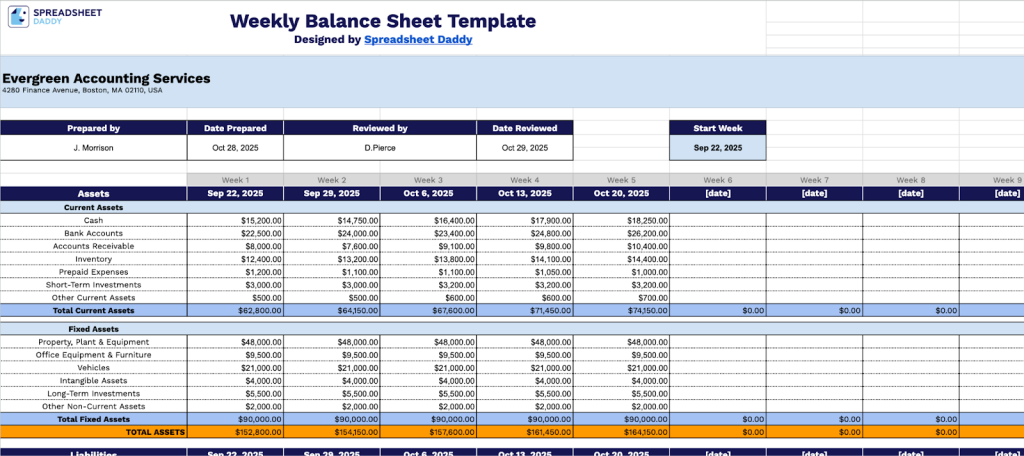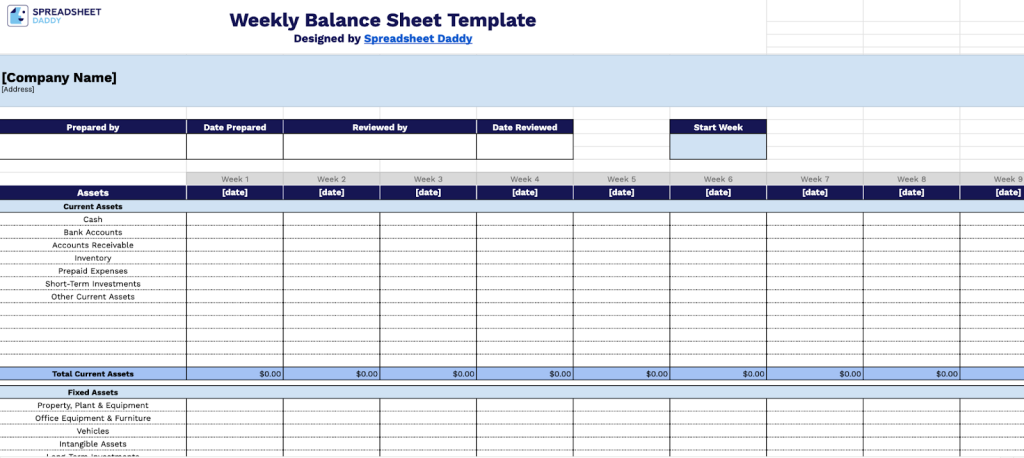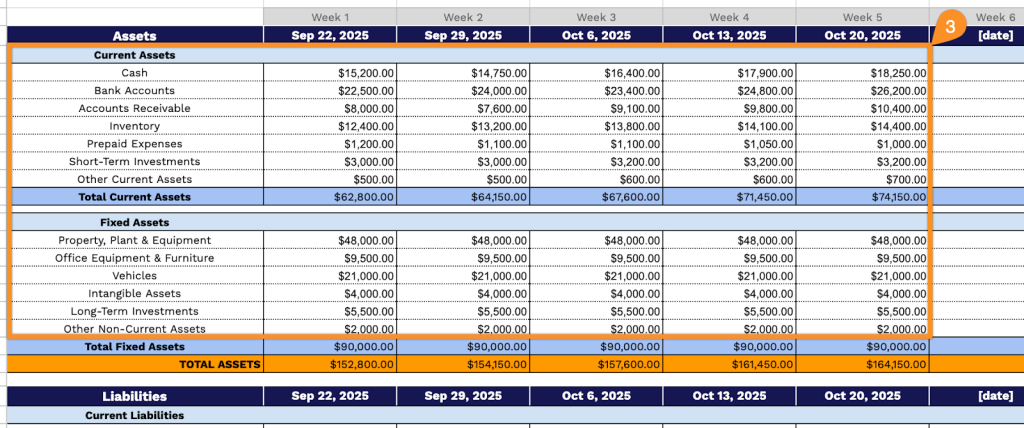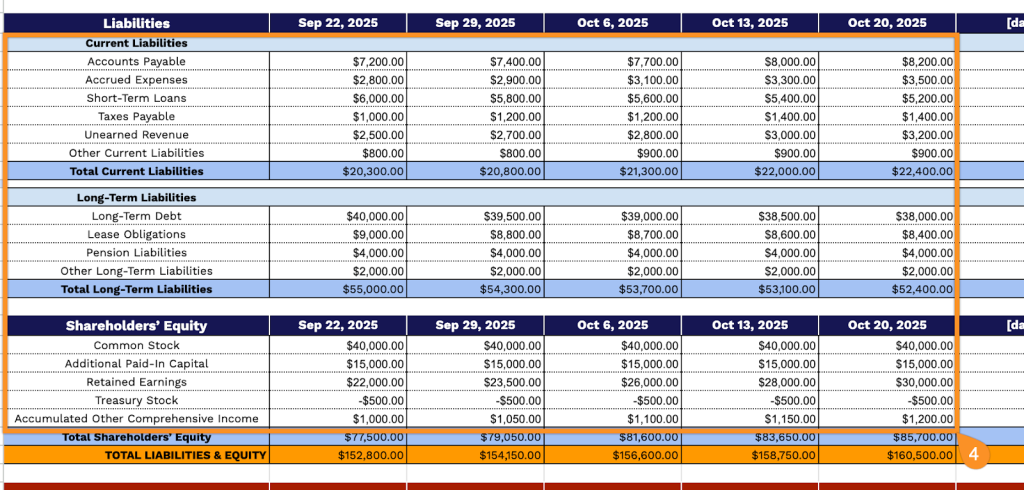Keeping your business finances organized can be simple. Our free Weekly Balance Sheet template lets you monitor your financial situation easily, in the format that works best for you.
Knowing your business’s financial position is essential, whether you are just starting, expanding, or aiming to maintain accurate records. A weekly balance sheet provides a clear snapshot of your assets, liabilities, and equity at any point in time.
We created this easy-to-use Weekly Balance Sheet template so you can start tracking your finances immediately. It is available in Google Sheets, Excel, and PDF, allowing you to choose the format that suits your workflow.
This template simplifies weekly financial management, so you can concentrate on growing your business rather than struggling with spreadsheets.
Quick Jump
ToggleWhat Is a Weekly Balance Sheet Spreadsheet?

A weekly balance sheet spreadsheet is a tool that helps track a business’s financial position.
This spreadsheet allows for quick updates and comparisons from week to week, helping businesses make informed financial decisions.
Download Spreadsheet Daddy’s Free Weekly Balance Sheet Spreadsheet

Our Weekly Balance Sheet Template helps you track your company’s financial position over time, providing a clear picture of what you own, what you owe, and your overall equity.
You can customize the template by adding or removing weeks/columns to match your specific reporting needs, whether you need fewer weeks for a shorter tracking period or additional columns for extended monitoring.
What’s included
- 12-Week tracking structure with YTD summary: Monitor your company’s financial position across 12 consecutive weeks with dedicated date columns for each week, plus a Year-to-Date (YTD) summary column. This quarterly view helps you identify trends and track weekly changes in your balance sheet.
- Comprehensive asset categories with automatic calculations: Assets are organized into Current Assets and Fixed Assets, with each category including automatic subtotals that roll up into Total Assets.
- Complete the liability breakdown in two tiers: Liabilities are structured into Current Liabilities and Long-Term Liabilities, with each tier automatically calculating subtotals for clear visibility into short- and long-term obligations.
- Full shareholders’ equity section: Tracks five essential equity components (Common Stock, Additional Paid-In Capital, Retained Earnings, Treasury Stock, and Accumulated Other Comprehensive Income) to provide a complete view of ownership value and retained profits with automatic totaling.
- Built-in balance verification system: Features an automatic Balance row that verifies the fundamental accounting equation remains balanced across all the weeks.
How to Use Our Weekly Balance Sheet Spreadsheet Template
1. Track your weekly financial position by downloading this balance sheet as Excel or PDF, or creating your own copy in Google Sheets.
2. Document the business name, address, and who prepared it, plus the preparation date. Note who verified it with their review date, and specify the start week’s date.

3. Begin by entering your weekly asset amounts in the designated Assets area. As you input each value, the system will automatically compute subtotals and your overall asset total.

4. Following this, record your Liabilities and Shareholder’s Equity sections by entering weekly figures for every line item. The template will automatically calculate subtotals for current liabilities, long-term liabilities, and the combined total of liabilities and equity.

5. The weekly closing balance self-calculates using every piece of financial data you’ve recorded.
